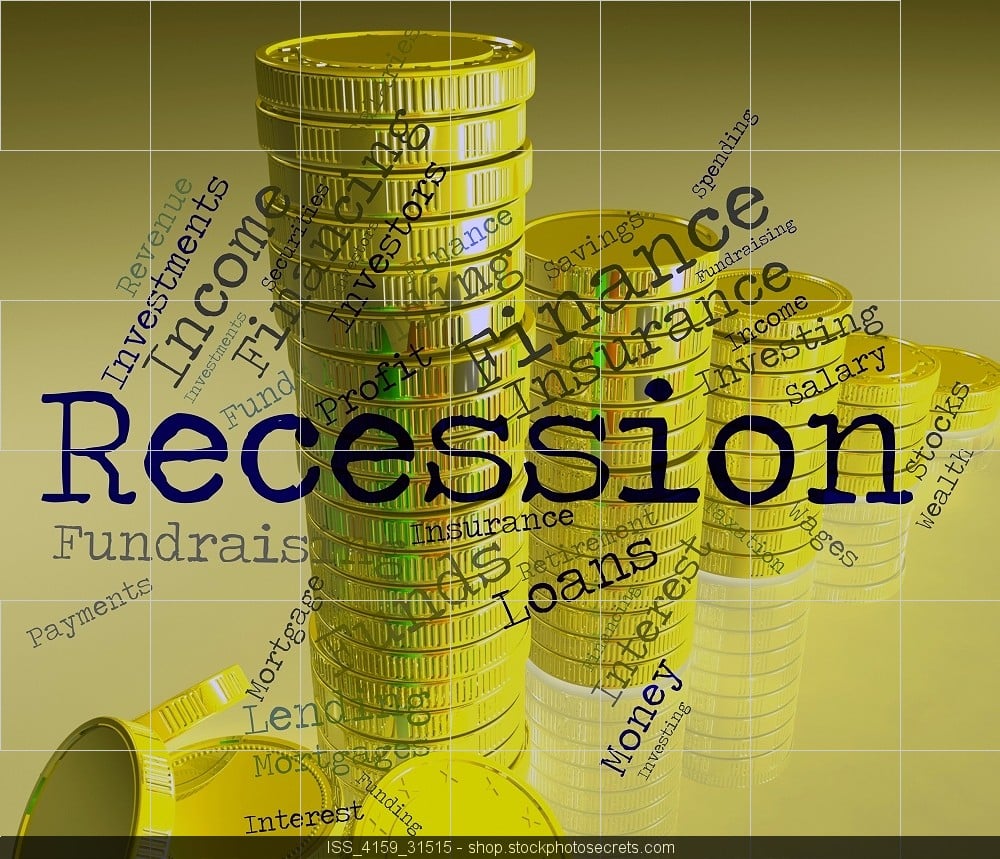
Answering Your Customers’ Pricing Strategy Questions: Addressing their Concerns 🧑💼
Listening to the pricing strategy questions your customers ask you is one of the best ways to understand what they really value about your products (and what they don’t). What do they really mean? Where are their pricing questions leading to? How should you interpret them?
>Download Now: Free PDF Future Proof Your Pricing Strategy
Often, your customers will have a feel for what they want when they buy from you, but not a clear and definitive view. They are looking to you for that. They need you to crystalise the value they feel you can provide them. But you have to really listen and put aside your ego to find out what they really want, need and value.
As the saying goes, “The customer is always right,” but that doesn’t mean all customers are easy to deal with or that all their pricing questions are as important as others. In effect, anyone who’s ever worked in a sales or pricing team can testify to that.
In this article, we’ll explore how to convince customers that your pricing strategy is the best one for them. We’ll also share with you pointers on answering pricing strategy questions.
We point out that customers have a say in the pricing strategy but ultimately the decision to increase prices is a business decision.
We believe that complaints after a price increase are actually a good way to test your pricing strategy and segmentation – even though it may not feel like this at the time. Addressing your customers’ pricing strategy questions can help ease the pain of the price increase and improve the effectiveness of your pricing strategy.
By the end of this article, you will learn the strategies to address your customers’ pricing strategy questions and use their feedback to your pricing advantage.
Table of Contents:
I. Answering Your Customers’ Pricing Strategy Questions: Addressing their Concerns
II. How To Set a Pricing Strategy for a Downturn and Prepare for a Rebound

Answering Your Customers’ Pricing Strategy Questions: Addressing their Concerns 🧑💼
Handling pricing strategy questions
Customers are forever questioning pricing for the services and products they buy – even when they know the price and are willing to pay for it, they will question your prices. Hence, questions about prices are a way of life. If you want your business to thrive, you have to deal with them.
Finding better methods and techniques to deal with pricing questions and answers is the only way to overcome the ‘fear’ of difficult pricing discussions with customers.
You need to articulate the value of your offer clearly so that customers are reminded of the value they are receiving from you. This is one of the hardest things to do – and the last part in the puzzle for pricing strategy execution.
In essence, the pricing team calculates the best price, but the sales teams have to communicate the value in a way that different customer groups can understand. Handling pricing strategy survey questions from sceptical customers to find the right prices is one way of doing it. However, customers often don’t reveal their true thoughts and feelings about value or prices in surveys.
An example of which is founder Leon Leonwood Bean, an avid outdoorsman; he began selling workmen’s rubber boots in 1912 out of the basement in his brother’s apparel shop. During his initial round of marketing, Bean offered a money-back guarantee to anyone not satisfied with the boots. Of the first 100 orders, 90 were returned. Refunding the money nearly drove Bean out of business.
He asked the customers what was the problem with the boots. It was found out that the leather tops separated from the rubber sole. He quickly learned from his mistake and corrected the defects. He then raised the price of the boots as the result of the improvements. The customers were satisfied with the improvements and did not complain about the price increase.
Today, a century after the first opening, the mail-order company has grown to more than $1.4 billion in annual sales.
Here are some points to follow in pricing strategy questions when responding to complaints.
-
Clearly understand the question first.
Customers basically ask two types of questions. Some are about if the price of the product is fair, while others are broader like the value they can get. In both instances, make sure you understand the question before responding. Rephrase the question mentally and repeat it to the questioner aloud, or ask to clarify further. Many times pricing teams are too quick to give an answer to a question that wasn’t even asked.
-
Listen with understanding.
Do not try to talk over the customer or argue with them. Let the customer have their say, even if you know what’s next, even if they are mistaken or misinformed. As you listen, take the opportunity to take into consideration if the argument is valid and can be used in creating the next pricing plan.
-
Be the pricing expert
Never forget, your customer would rather talk with a trusted expert who has extensive knowledge of the pricing strategy than an ordinary salesperson who simply understands how the product works. Your goal is to become an authority by intently listening to the questions the customer asks. Then you can use your expertise to solve the customers’ complaints.
-
Redirect absurd and improper questions.
Don’t get frustrated when you are asked an inappropriate question. Simply explain clearly in layman’s terms on the reason for the pricing implementation.
-
Assume all your customers are watching.
Pretend you are not talking only to the customer but to a captive audience. This shift in perspective can provide an emotional buffer if the customer is being verbally abusive. It will allow you to think more clearly when responding. Since an unruly customer can be a negative referral, assume they’ll spread their experience to other potential customers. It can help ensure you’ve done your best to address their pricing concerns in a calm way.
-
Know when to compromise in the new pricing strategy.
Sometimes it’s best to find the middle ground in the strategy. It will develop more productive customer relationships. Keep in mind, it is the customers who are buying the products and pricing too much will drive them away.
-
Maintain a confident demeanour.
The most powerful answer to the hardest question isn’t just the response that you provide. Also, it’s how you deliver it. No matter what the question is, remain calm and maintain a confident demeanour. Most importantly, don’t get defensive. When someone disagrees with your price decision-making, it’s okay to disagree without being confrontational.
-
Never stoop to their level.
If the customer is swearing or being verbally abusive, take a deep breath and let them finish. Stooping to their level will not solve anything. It will usually escalate the situation in a negative direction. Instead, remind the customer that you are there to help them. Hence, their best immediate chance of resolving the situation is to be civil.
-
Never take it personally.
Always speak to the issue at hand and do not get personal, even if the customer does. Remember that the customer doesn’t know you. They’re just venting frustration at you as a representative of your company. Gently get back to the issue and how to convince them this is the right pricing strategy. Try to ignore insults.
-
Summarise the next steps.
At the end of the concern, let the customer know exactly what to expect. It could be either the pricing will remain or needs further studying. Document their inputs so the next pricing strategy, you will consider their inputs. Hopefully, this will satisfy the customers.
Just remember, behind every question customers ask is an ulterior motive. They may want to validate a bias or throw you off guard. Hence, that’s why you shouldn’t be too eager to answer. Otherwise, you’ll find your foot in your mouth. The first step is to find out why the question was asked. Then formulate your response to demonstrate your pricing expertise in order to command respect.
Implications
In any business, there will always be a customer who will complain. Giving a clear and concise answer to calm them is primary. In effect, this will give a positive impression that you always have the customers in mind when creating a new pricing strategy.
To answer even the toughest question, be the expert in your different pricing policies. Hence, knowing every nook and cranny of the strategy will shoot down even the toughest one.
Having a great demeanour can calm the customer down a lot. Shouting back to prove a point would only aggravate the argument. Therefore, try to be calm and explain to them the reasons behind the prices.
〉〉〉 Get Your FREE Pricing Audit 〉〉〉
Conclusions
Remember that you’re interacting with a human. Everyone has bad days. Additionally, we’ve all been there, to some degree. Try to help make their day better by being a pleasant, calming voice. It will make you feel good too.
It’s not personal. At the end of the day, all of the pricing issues will be resolved and the customers will leave. Thus, this is a good time to reflect on making better pricing decisions and take into account their pricing strategy questions.
There is the saying, “the customer is always right”. Therefore, it should not be taken with the absolute mantra. Use your judgement if the complaint has valid points. Decide with impartiality.
Discover what steps you can make to address customers’ complaints to the price increase.

How To Set a Pricing Strategy for a Downturn and Prepare for a Rebound 📉
In a recession, how do you handle the circumstances when your sales have plummeted? How to set a pricing strategy in a downturn? Do you automatically cut prices to make your customers happy in the short term?
When the economy slows, many companies feel that they have no choice but to slash prices and get sales through the door at any cost. As deal volumes fall, price discipline appears to go straight out the window, and within no time at all everyone in the business is convincing each other that excessive discounting is the only way forward to weather the storm.
No doubt that slashing prices can help increase sales immediately (in the short term). However, pricing experts believe that such an impulsive reaction may not be the perfect pricing tactic. Customers may expect more discounting from your company and in the long run, hurt your brand’s reputation when the downturn is over.
In this article, we’ll be answering the question many firms are asking right now: How to set a pricing strategy in a recession?
In addition, we will provide you with a checklist on what you need to consider before you even think of discounting. Most importantly, we will give you an overview of pricing insights during a downturn and how to prepare when the economy bounces back.
Before proceeding to our main topic, let’s first define what a recession is. Recession is a time of economic decline. Or simply, a downturn, where there’s decreasing real incomes and increasing unemployment. In a downturn, customers probably have smaller income and no income at all (because of unemployment) and they become more price-sensitive.
How does a downturn influence the businesses in setting their prices of goods and services?
Companies expect to see a decrease in demand and unsold products in a recession. Thus, giving them a reason to reduce prices.
- The decline in demand puts downhill pressure on prices.
- Demand is expected to be more sensitive to changes in price. So, a company cut prices to increase revenue.
- In an economic downturn, businesses have a high probability of going out of business because of cash-flow problems. To help survive the recession, there is a clear incentive to offer big discounts to bring in revenue because of unsold stock and liquidity problems.
5 Pricing Insights on Pricing in a Recession
Our overview below will provide you with 5 pricing insights on pricing in a recession and how to prepare for a rebound. In other words, these are helpful steps on how to set a pricing strategy in a downturn.
-
Keep pricing discipline
In a recession, many companies naturally believe they should be offering more discounts or cut prices than before to maintain volumes. But why do firms all have a tendency of doing the same thing and resort to excessive discounting? Recent studies reveal the 5 top triggers of this recessionary discounting phenomena are:
-
- Change in competitor pricing strategy
- New entrants in the market with new business models
- Launch of new products/services
- Improved capability/data
- Disruptive technologies changing the product/services
Clearly, firms don’t like it when their rivals suddenly change and do something different. Especially their pricing. Price changes make executives uncertain and teams panic. However, losing control in a crisis is not the answer to any of the triggers above.
Reducing prices in a downturn will only ever be a short-term tactical move. It’s not a sustainable or profitable pricing strategy. In many ways, firms would be better off financially if they did nothing when their rivals slash prices. Retaliating with further discounts is very unprofitable price action and response and leads to a vicious cycle of commoditisation.
-
Reinforce sales power
Over the past few months, the mandate in most firms has been to launch enterprise-wide cost-reduction programs to maintain margins. Around 98.5% of growth initiatives were stalled or halted during the months of March through to August, in response to the covid crisis. Economic turmoil has ensued as a result of ‘hibernating businesses’ for this length of time; costing the Australian economy, in turn, c$4B a week for every week businesses were out of operation.
Quite understandably, then, firms have been ultra concerned with reducing their selling, general, and administrative expenses to stay in business. Growth initiatives like price improvement, technology or analytics projects were put on hold or managed at a very tactical level.
However, cost-cutting is only ever going to be a short term answer to maintaining margins during recessions. Firms now want to invest in growth opportunities like pricing improvement initiatives to reignite productivity and recoup prior losses and find new revenue streams.
-
Determine and remain close to the best customers
When pricing chaos prevails, firms can lose sight of their customers’ needs because they are too focused on their own. Not staying close to the customer in a recession is a surefire way of higher customer churn, not to mention a self-centre business model disconnected to the market and its customers.
However, every order counts, and acquiring and then serving a new customer costs money. Which means identifying high-value customers and looking after them, can help prevent churn and inform new pricing and business models.
Traditional pricing segmentation strategies, for example, describe the “best” customers in terms of profit. However, a more useful segmentation strategy views customers in several ways i.e. profitability, growth rates, relationship quality, and market power. It can also show you where your business is performing well and where it needs to develop.
-
Create a dynamic response model
It can often be the case that firms rely on pricing models that are completely unsuitable for recessionary times. Often businesses are not aware that cost-plus pricing models are leaking more margin than they are making. Sales teams really need better tools and pricing models to adjust to changing pricing situations during a recession.
A dynamic response model can help firms work how and where to execute a set of actions that are repeatable, long-lasting, leading to excellent business outcomes. A fixed cost-plus pricing model, conversely, doesn’t give sales teams the pricing flexibility they need because price parameters are irrelevant and designed for a different and more stable market.
-
Set up commercial capabilities and systems
Business executives tend to view recessions as periods of retrenchment when really they are a wake-up call to improve business capabilities and systems. In a downturn, it takes more leadership, skill, data, and advanced tools to set and manage prices and discounting than when the orders are pouring in.
Monitoring, value measurement, new insights, and governance models are better ways of guiding companies through uncertainty. In a downturn, it’s always a good pricing policy to invest in the right people and technology and at the right time.
Discussion
The danger of reducing prices in every downturn or recession is commoditisation. This is because when a firm offers large discounts in response to a downturn, they are, in effect, training customers and end consumers to expect discounts every time the economy is shaky. With this kind of customer mindset, it makes it difficult to increase prices later on a rebound. Therefore, businesses should know how to set a pricing strategy in a recession.
Discounting at the wrong time reinforces bad behaviour: Consumers will repeatedly ask for discounts because they think this is acceptable behaviour. Teams will think discounting is their only option and overuse them in the market. Brands can and do get destroyed by years of poor pricing practices.
Furthermore, hasty discounting obviously results to profit loss and could do more harm to your business than good. Pricing determines the worth of a product. Customers oftentimes value a product based on its price. Thus, the value of the product is destroyed or weakened when discounted.
Some questions that companies need to consider before they even think of discounting:
- Do your customers still need your specific products?
- Do you have product substitutes that are readily available? If yes, how attractive are they?
- What benefits do customers get by buying your products instead of your competitors’?
- Do you have the ability to provide timely delivery or servicing?
These questions all lead to the need to immediately segment your customers clearly on how price-sensitive they are, measuring the possible effect that discounting will have on their present and future purchases. Essentially, having a strong pricing power helps. More importantly, the know-how on how to set a pricing strategy in a downturn.
Implications
When discounting becomes a norm (and businesses are in effect subsidising failing economies), both manufacturer and supplies firms are left with very low anchor prices that continue way after a recovery.
Whole industries quickly are commoditised as prices are routinely driven down to rock bottom for everyone.
Cutting revenue-generating jobs in sales and pricing leads to further margin loss as pricing remains chaotic and largely tactical.
〉〉〉 Get Your FREE Pricing Audit 〉〉〉
Conclusion
In a recession, demand will drop off, customers will complain, competitors will slash prices and teams will panic. But, losing control of pricing and offering customers excessive discounts as a response to change is never the best pricing policy.
Consider instead this pricing roadmap in a recession:
- Keep pricing discipline
- Reinforce sales power
- Determine and remain close to the best customers
- Create a dynamic response model
- Set up commercial capabilities and systems
Recessions are a wake-up call to us all. Pricing systems, pricing strategies and even your leaders and teams will need tweaking or a complete overhaul during a recession.
Click here to access your free pdf guide on driving pricing strategy in your business.
For a comprehensive view on maximising growth in your company,
Download a complimentary whitepaper on How To Drive Pricing Strategy To Maximise EBIT Growth.
Are you a business in need of help to align your pricing strategy, people and operations to deliver an immediate impact on profit?
If so, please call (+61) 2 9000 1115.
You can also email us at team@taylorwells.com.au if you have any further questions.
Make your pricing world-class!
Related Posts
Leave a Reply Cancel reply
Categories
- marketing strategy (26)
- Organisational Design (14)
- Podcast (114)
- Pricing Capability (87)
- Pricing Career Advice (10)
- Pricing Recruitment (19)
- Pricing Strategy (290)
- Pricing Team Skills (13)
- Pricing Teams & Culture (24)
- Pricing Transformation (47)
- Revenue Model (25)
- Sales Effectiveness (27)
- Talent Management (7)
- Technical Pricing Skills (35)







